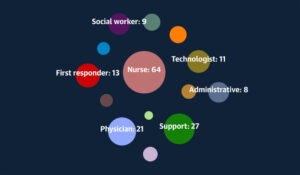December 16, 2016; Jewish Advocate
Have we not yet learned our lessons? The public is often intolerant of anything that smacks of greed at the top of nonprofit organizations. Once a reporter has located a story in that vein, they will be driven to look at the rest of the financials, scrutinizing them for overpayments elsewhere, for conflicts of interest, and other signs of inadequate stewardship. Many such cases are surfaced in years where extraordinary payments are made—some may be quite justifiable, but some are most decidedly not. So, if you believe you have a supportable case for a one-time payment to a leader, reporting is key; don’t just state in your 990 that the executive’s salary is more than three times what it was the previous year. Make good use of the areas in which you can explain such stuff.
Take, for example, the recent revelation about Boston-based Combined Jewish Philanthropies’ president, Barry Shrage, receiving a $1.3 million bonus in 2014 on top of his $500,000 (plus benefits) annual salary. This shows up as a $1.8 million compensation package.
Sign up for our free newsletters
Subscribe to NPQ's newsletters to have our top stories delivered directly to your inbox.
By signing up, you agree to our privacy policy and terms of use, and to receive messages from NPQ and our partners.
Shrage runs an organization that has a $400 million annual budget with 200 employees, hosts programs such as financing U.S. government officials’ travel to Israel on diplomatic missions, and maintains a four-star rating with Charity Navigator. His annual paycheck is less than one percent of the budget—not unusual for peers in the for-profit sector and still very economical as a percentage of total revenue by typical nonprofit standards. The organization’s chairman, Neil Wallack, explained the expense as “a one-time payment to correct compensation.” Schrage has been the president for almost 30 years.
So, what were supporters and critics so up in arms about? It’s the fact that the huge bonus wasn’t publicly disclosed except on the organization’s Form 990 (usually made public via platforms such as GuideStar nearly a year after the organization’s fiscal year ends). Even when the Combined Jewish Philanthropies’ 990 was made public, it took several months for anyone to notice the unusually large one-time disbursement. The reporter who noticed it then also noted 11 other employees with salaries above $150,000.
Bonuses and salaries like that, however, do raise eyebrows, and even more so when an organization appears to be not intentionally forthcoming with its constituents. This story has more to do with effective and timely donor education than with greed. Donors that trust the charities they support do not usually feel the need to check with Charity Navigator or GuideStar before making their donations—but they will read the headlines. So, part of the new job of the board of directors is to ensure that you are clear about oddities in your financials in those places where the public can see them—like on GuideStar.—Angie Wierzbicki













